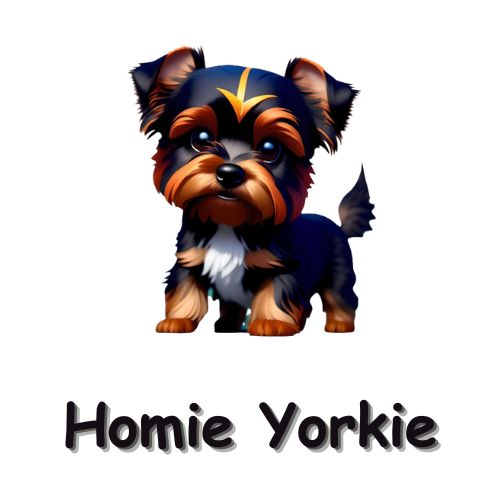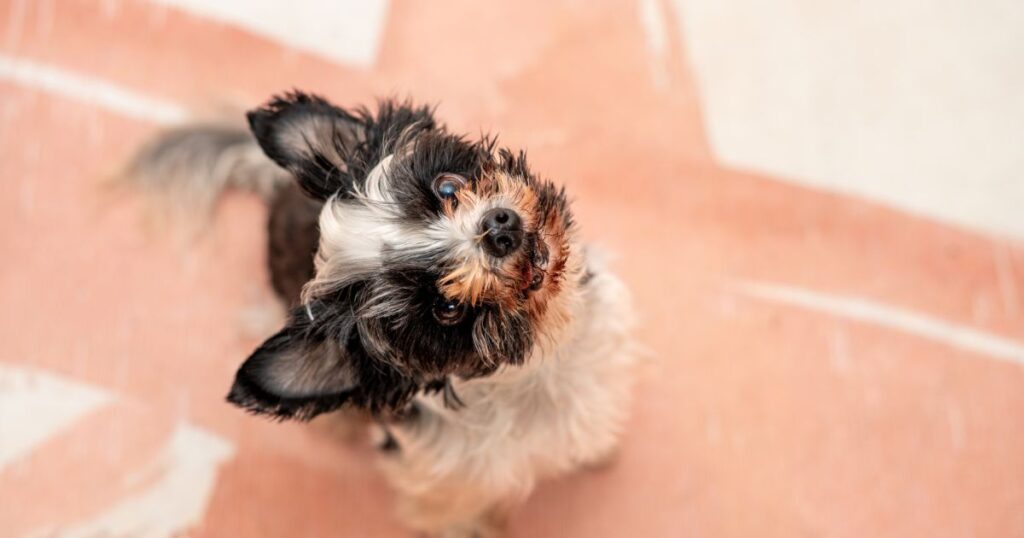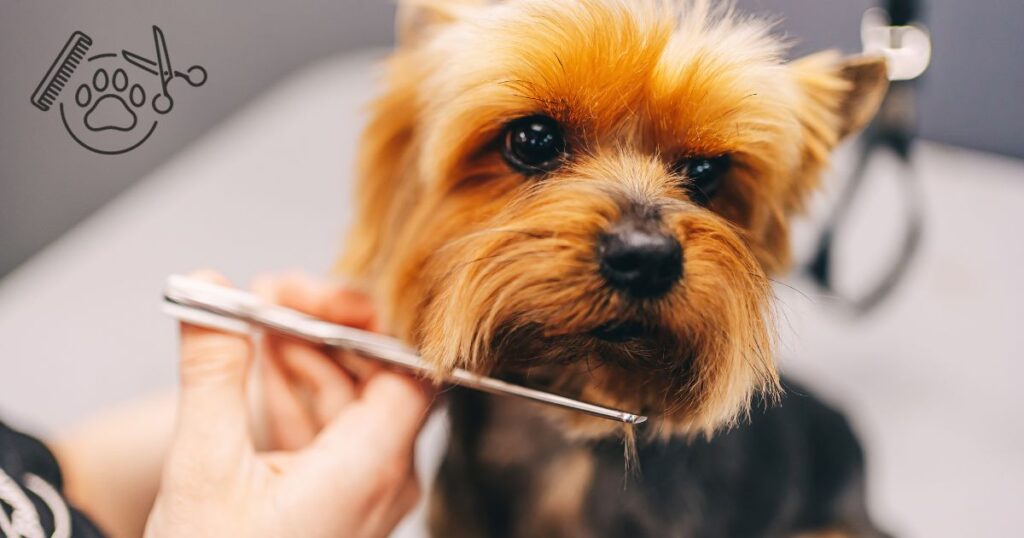Do Yorkies Shed a Lot? How to Truly Care for Over-shedding?
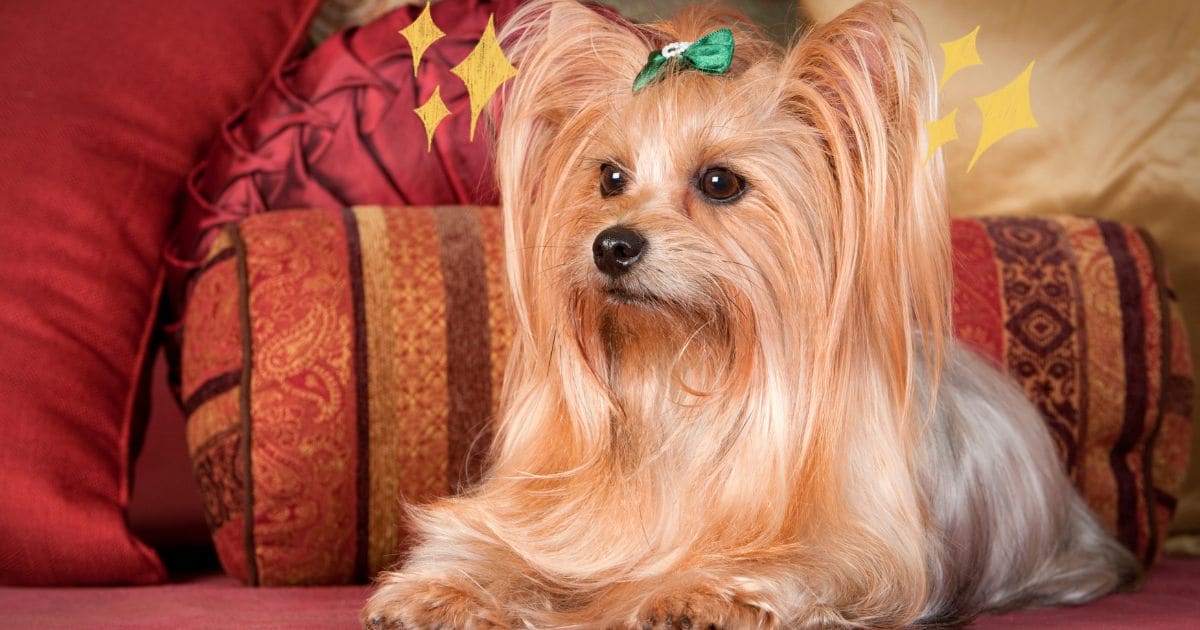
One significant concern that often arises when considering bringing a Yorkie into the family is shedding.
Shedding is a natural process for most dog breeds, including Yorkies, despite some misconceptions suggesting otherwise. Many hopeful pet owners mistakenly believe that Yorkies are non-shedding or hypoallergenic dogs. However, it’s crucial to shed light on the reality of Yorkie shedding to help prospective owners make informed decisions.
About Yorkie Coat and Shedding
When it comes to Yorkies, their coat is undoubtedly one of their most striking characteristics. These adorable toy breeds have a fine and luxurious coat that resembles soft human hair. As for shedding, many wonder, “Do Yorkies Shed a Lot?”
Unlike the thick fur seen in many other dog breeds, Yorkies boast a single layer of hair, similar to human hair, which contributes to their hypoallergenic properties. This unique coat structure sets them apart from furrier breeds and makes them a popular choice for individuals with allergies or those seeking low-shedding companions.
The shedding cycle of Yorkies is a natural process that occurs in all dogs. Like most breeds, Yorkies shed hair as part of their natural growth and renewal process. Shedding helps them get rid of damaged or old hair and makes way for new, healthier hair growth. While it’s true that Yorkies don’t shed as much as some heavy-shedding breeds, it’s essential to understand that Yorkies do indeed shed.
It’s essential to understand that shedding patterns can vary among individual Yorkies. While some may experience minimal shedding, others might shed more noticeably. So, the notion of “one size fits all” when it comes to Yorkie shedding is far from accurate.
Yorkie Shedding Frequency
The frequency of shedding in Yorkies can vary from one dog to another and is influenced by various factors such as genetics, health, and climate. Some Yorkies may have a minimal shedding rate, while others may shed more noticeably. Additionally, Yorkies may experience seasonal shedding, which means they may shed more during certain times of the year.
Patterns and Causes
Yorkie shedding patterns can be influenced by several factors, including genetics, age, health, and hormonal changes. For example, pregnant or lactating female Yorkies may experience increased shedding due to hormonal fluctuations. Additionally, some Yorkies may shed more when exposed to stressful situations or changes in their environment.
Yorkie Shedding Factors
As we explore the intriguing world of Yorkie shedding, it becomes evident that several factors play a crucial role in determining the shedding patterns of these charming companions.
Genetics
Genetics significantly influence a Yorkie’s shedding patterns. Inherited traits from their parents can affect how much and how often a Yorkie sheds.
If a Yorkie comes from a lineage of heavy shedders, likely, they may likely also shed more compared to Yorkies from a lineage of lighter shedders. While it’s not possible to eliminate shedding through breeding, responsible breeders may aim to minimize excessive shedding tendencies through selective breeding practices.
Health and Nutrition
A balanced and nutritious diet is vital for a Yorkie’s overall well-being, including the health of its coat. Inadequate nutrition can lead to coat problems, including excessive shedding and dull-looking fur.
Ensure your Yorkie receives a diet that is rich in essential nutrients, vitamins, and minerals to promote a healthy coat and minimize shedding. High-quality dog foods specially formulated for small breeds, like Yorkies, are readily available and can provide the necessary nutrients to support a glossy coat.
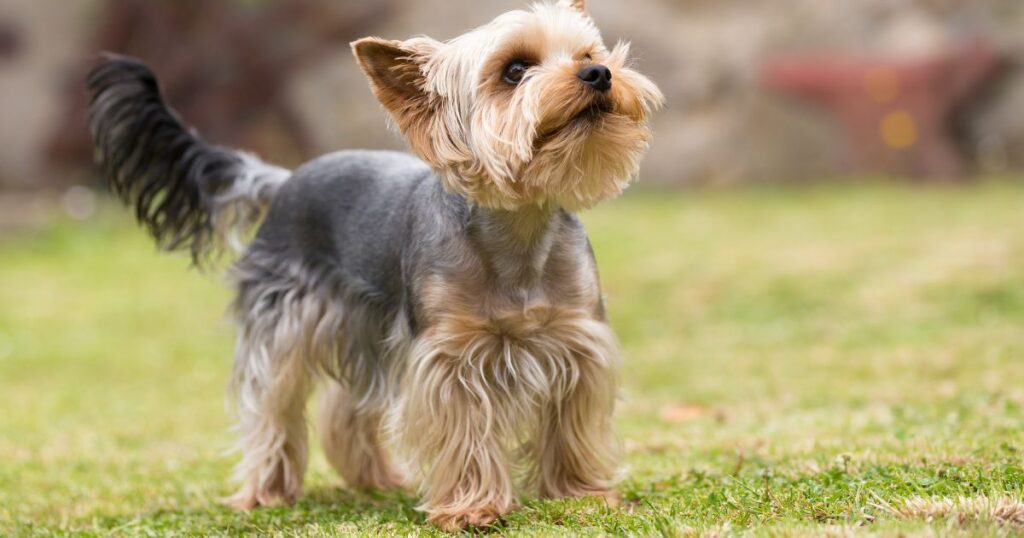
Hormonal Changes
Hormonal fluctuations can also impact a Yorkie’s shedding patterns. Hormonal changes due to pregnancy and lactation in female Yorkies may result in increased shedding. Additionally, Yorkies going through hormonal transitions, such as puberty or senior age, might experience fluctuations in their shedding.
Pregnancy (In Female Yorkies)
If you have a female Yorkie going through pregnancy or lactation, it’s essential to provide extra care and attention during this period. Ensure she receives a nutritious diet to support both her health and the health of her puppies. Regular grooming during this time can help manage shedding and keep her coat in good condition.
Do Yorkies Shed a Lot? Myth Exposure
One of the most common misconceptions about Yorkies is that they are entirely non-shedding or hypoallergenic dogs. This belief has led many potential owners to assume that Yorkies won’t leave pesky hairs all over their homes or trigger allergies. However, it’s essential to set the record straight and debunk this myth surrounding Yorkie shedding.
Myth of Non-Shedding Yorkies
While it’s true that Yorkies shed less than some heavy-shedding breeds, they are not completely non-shedding. The term “hypoallergenic” is often used to describe dog breeds that produce fewer allergens and are less likely to trigger allergies in sensitive individuals.
However, no dog breed is truly hypoallergenic, including Yorkies. All dogs produce allergens like Can f 1, including proteins found in their skin cells, saliva, and urine, which can cause allergic reactions in susceptible individuals.
Expert’s Opinion on Yorkie Shedding
Experts in dog breeds unanimously confirm that all dogs, including Yorkies, shed to some extent. It’s a natural and unavoidable process for maintaining a healthy coat. The amount of shedding can vary among individual dogs, depending on factors such as genetics, health, and grooming habits.
Experienced Yorkie breeders also swear to the shedding tendencies of these charming toy breeds. Reputable breeders ensure prospective owners are aware of the shedding aspect and provide guidance on proper grooming and coat care. They emphasize the importance of regular brushing and grooming sessions to minimize shedding and maintain a healthy coat.
Identifying Excessive Shedding
While shedding is a natural process for Yorkies, it’s essential to recognize when shedding becomes excessive or abnormal. Identifying excessive shedding can help you address potential underlying health issues and provide appropriate care for your beloved Yorkie companion.
If you notice your Yorkie shedding excessively or experiencing bald patches, it’s crucial to consult a veterinarian for a thorough examination.
Yorkie Over-Shedding Warning Signs
- Bald Patches: If you notice areas on your Yorkie’s coat that have become noticeably thin or bald, it could be a sign of excessive shedding. Bald patches can be an indicator of an underlying health problem or skin issue that requires attention.
- Constant Hair Fall: While it’s normal for Yorkies to shed regularly if you observe a significant increase in hair fall, such as large clumps of hair coming out during grooming or petting, it may be excessive shedding.
- Dry and Dull Coat: Excessive shedding can lead to a dry and dull-looking coat. If your Yorkie’s coat appears lackluster and lacks the usual shine, it might be a sign of shedding issues.
- Skin Irritation or Redness: Frequent scratching, redness, or irritation on your Yorkie’s skin could indicate excessive shedding. Skin problems can contribute to increased hair fall and discomfort for your pet.
Normal Shedding and Health Issues
It’s essential to differentiate between normal shedding and shedding that may indicate an underlying health problem. Yorkies typically shed year-round, but they may experience seasonal shedding during spring and fall. This is a normal shedding pattern for many dog breeds as they transition between seasons.
However, if you notice an abrupt change in your Yorkie’s shedding patterns or any of the signs mentioned above, it’s crucial to consult a veterinarian for a thorough evaluation. Excessive shedding could be a symptom of various health issues, including allergies, skin infections, hormonal imbalances, or other medical conditions.
Early detection and proper diagnosis are essential for effective treatment and management. Your veterinarian can conduct a thorough examination, perform necessary tests, and recommend appropriate treatment or lifestyle changes to address the underlying cause of the excessive shedding.
Taking Care of Yorkie Shedding
For Yorkies with normal shedding or mild hair fall, regular grooming practices should be sufficient. However, for those experiencing excessive shedding due to health issues, grooming may need to be adjusted. Your professional groomer can advise on the best grooming practices and products to use to address your Yorkie’s specific needs.
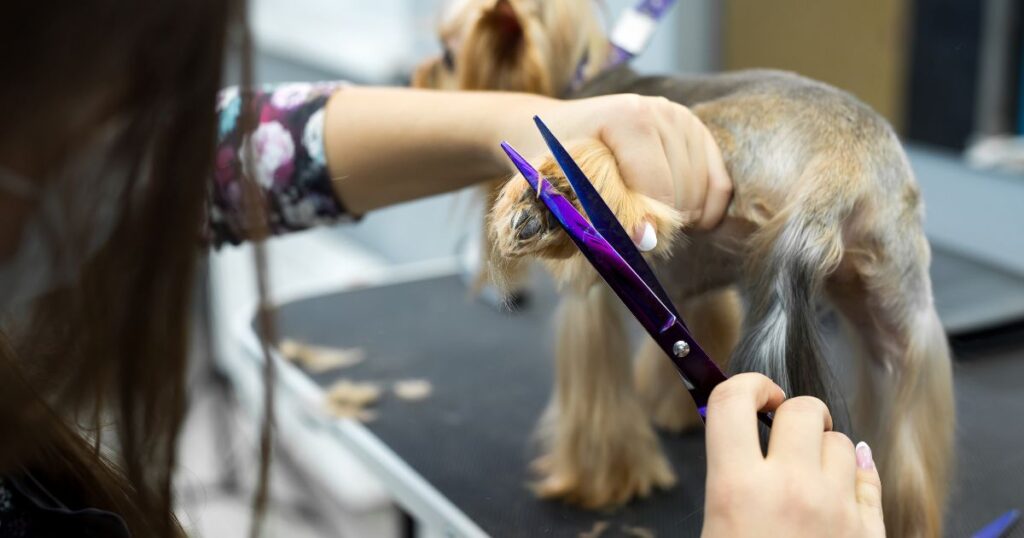
Remember that proper nutrition, regular exercise, and a stress-free environment also play crucial roles in maintaining a healthy coat and overall well-being for your furry friend.
1. Brushing
Regular brushing is one of the most crucial grooming techniques for managing Yorkie shedding. Brushing helps remove loose and dead hairs, preventing them from ending up on your furniture and clothes.
For Yorkies, a soft slicker brush, a fine-toothed comb, and a de-shedding tool are ideal for capturing loose hairs without irritating their sensitive skin. When possible, groom your Yorkie outdoors. This prevents loose hairs from spreading throughout your home and makes cleanup more manageable.
Brushing Frequency: Brush your Yorkie’s coat at least two to three times a week. However, if your Yorkie has longer hair, more frequent brushing may be necessary to prevent tangles and mats.
2. Regular Bathing
Bathing your Yorkie is an essential part of their grooming routine. Bathing helps keep their coat clean and free from dirt and debris. Use a gentle, hypoallergenic dog shampoo that won’t strip their coat of its natural oils. It’s crucial not to over-bathe your Yorkie, as excessive bathing can dry out their skin and lead to increased shedding.
Bathing Frequency: Bathe your Yorkie every four to six weeks or as needed. If your Yorkie spends a lot of time outdoors or gets particularly dirty, more frequent baths may be necessary.
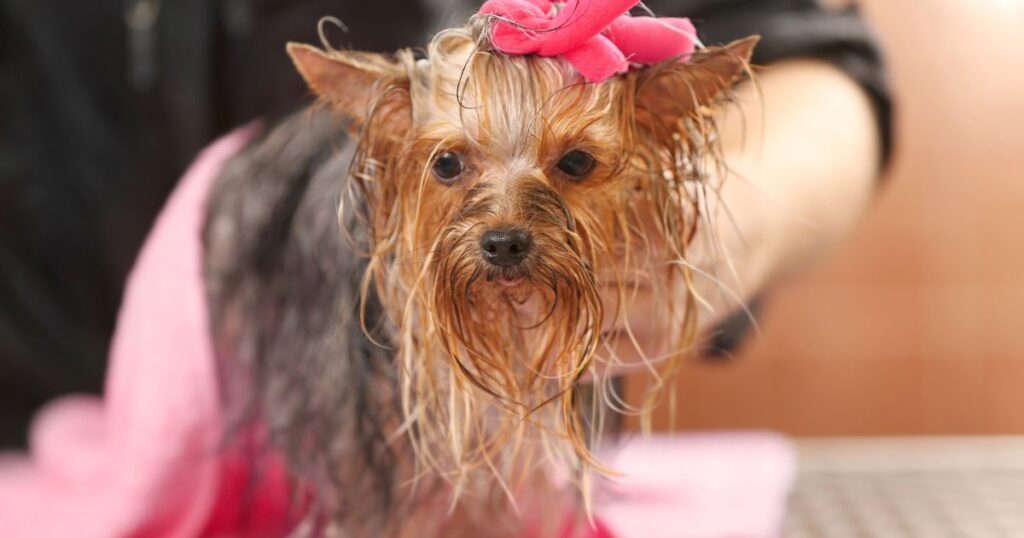
3. Routine Trimming
Trimming is vital for maintaining a healthy coat and minimizing hair fall in Yorkies. Regularly trimming your Yorkie’s hair, especially around the eyes, ears, and paws, helps prevent hair from becoming tangled and causing discomfort. Trimming also keeps your Yorkie looking neat and well-groomed.
Trimming Frequency: Trim your Yorkie’s hair every six to eight weeks or as needed. If you’re not confident in trimming your Yorkie’s hair, consider seeking the assistance of a professional groomer.
4. Professional Grooming
While regular at-home grooming is essential, there are times when professional grooming can be beneficial. Professional groomers have the expertise and experience to address specific grooming needs and ensure your Yorkie’s coat is in top condition.
Professional Grooming Tips: When choosing a professional groomer for your Yorkie, look for someone who has experience with small dog breeds and understands the unique grooming requirements of Yorkies. Before the grooming session, communicate your preferences and any specific concerns you have regarding your Yorkie’s coat.
5. Diet and Nutrition
Proper nutrition plays a significant role in maintaining a healthy coat and managing shedding in Yorkies. Ensure your Yorkie receives a balanced diet with essential nutrients, including proteins, omega-3 fatty acids, and vitamins. These nutrients contribute to healthy skin and coat, reducing excessive shedding.
Essential Nutrients to follow
- Protein: Essential for healthy coat growth, opt for dog food with high-quality animal protein like chicken, turkey, or fish as the main ingredient.
- Omega-3 and Omega-6 Fatty Acids: Omega-3 is crucial for skin and coat health, these fatty acids nourish the skin, reduce inflammation, and contribute to a soft and shiny coat. While omega-6 helps maintain the skin barrier and prevent excessive dryness and flakiness. Salmon and coconut oil are rich in omega-3 fatty acids.
- Biotin: This B vitamin promotes healthy skin and coat, reducing hair loss and improving coat texture. For example Eggs.
- Zinc: Essential for proper coat growth and healthy hair follicles, preventing dull and dry coats.
- Vitamins A, D, and E: Crucial for skin health and coat growth, with vitamin A promoting healthy skin and a shiny coat, while vitamin D regulates hair growth and shedding. Vitamin E is a powerful antioxidant that protects the skin and coat from damage caused by free radicals. Food like Brewer’s Yeast, carrots, sweet potatoes, and spinach are rich in vitamins.
6. Washing
Washing your Yorkie’s bedding and blankets regularly can help reduce the accumulation of hair in their resting areas. Also, cover your furniture with washable covers or throws to protect them from shedding. This allows you to remove and wash the covers easily when they accumulate pet hair.
If you or a family member have allergies, consult with an allergist before bringing a Yorkie into your home. While no dog is completely hypoallergenic, some breeds may be better suited for allergy sufferers.
Shedding Concerns of Yorkie Owners
As a Yorkie owner, it’s natural to have concerns about shedding, especially if you’re a first-time dog owner or have allergies. Addressing these common concerns and understanding the shedding patterns of Yorkies can help you manage their coat effectively and create a more comfortable living environment for both you and your furry friend.

1. Shedding Clumps of Hair
One common concern is whether Yorkies shed clumps of hair. Unlike some dog breeds that shed in large clumps, Yorkies typically shed fine hairs, which can be less noticeable.
However, during seasonal shedding, you may notice a slightly higher amount of loose hair than usual. Regular grooming with suitable brushes and combs will help prevent excess hair from accumulating around your home.
2. Shedding During Specific Seasons
Yorkies, like many other dog breeds, experience seasonal shedding. Seasonal shedding is a natural process in which dogs shed their old fur to make way for new growth. For Yorkies, the most significant shedding usually occurs during the spring and fall seasons.
Practical Solutions: To manage seasonal shedding, increase the frequency of grooming sessions during these periods. Daily brushing can help remove loose hairs and keep your Yorkie’s coat in good condition.
3. Shedding and Allergies
One of the most critical concerns for potential Yorkie owners is whether their shedding will trigger allergies. As previously mentioned, no dog breed is entirely hypoallergenic. While Yorkies produce fewer allergens compared to some other breeds, they can still cause allergies in sensitive individuals.
Practical Solutions: If you or a family member has allergies, consider spending time with Yorkies before making them a part of your family. This will help you determine if allergies are triggered. Additionally, maintaining a clean living environment, regular grooming, and vacuuming can help reduce allergens in your home.
4. Shedding and Pregnancy
Female Yorkies may experience changes in shedding patterns during pregnancy and lactation. Hormonal changes can affect the coat and may lead to increased or decreased shedding during this time.
Practical Solutions: During pregnancy and lactation, it’s essential to provide proper nutrition to support your Yorkie’s health and coat. Consult with your veterinarian for guidance on managing shedding during these hormonal changes.
5. Shedding and Stress
Just like humans, dogs can experience stress, and it may display changes in their coat health and shedding patterns. Stress can lead to excessive shedding in some cases.
Practical Solutions: Create a calm and comforting environment for your Yorkie. Provide regular exercise, and spend quality time together to reduce stress and its impact on shedding.
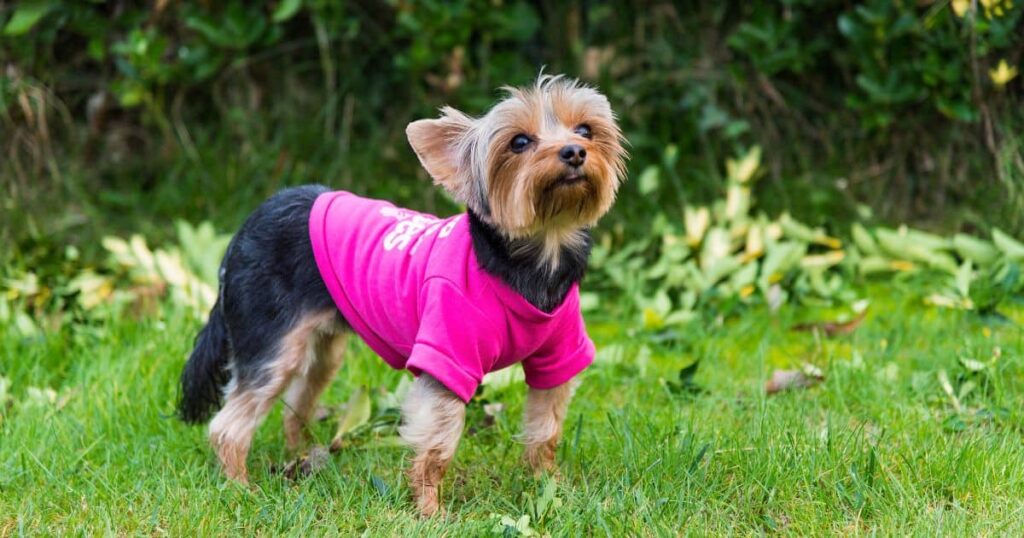
6. Shedding and Underlying Health Issues
Excessive shedding can sometimes be a symptom of underlying health problems in Yorkies. If you notice a sudden increase in shedding along with other concerning symptoms, such as skin issues, weight loss, or changes in behavior, it’s essential to seek veterinary attention promptly.
Practical Solutions: Regular veterinary check-ups and prompt attention to any health concerns can help prevent or manage excessive shedding due to health issues.
For individuals considering a Yorkie as a pet, it’s crucial to understand these shedding aspects and manage expectations accordingly.
While Yorkies don’t shed as much as some other breeds, they still produce loose hairs that require regular grooming to keep under control. Potential Yorkie owners should be prepared for some degree of shedding and adopt appropriate grooming practices to manage loose hairs effectively.
Recommended Tools for a Shed-Free Home
Lint Roller or Sticky Tape
Keep a lint roller or sticky tape on hand to quickly remove any loose hairs from your clothing, furniture, and other surfaces.
Vacuum Cleaner
Frequent vacuuming is essential to keep your home free from loose hair. Invest in a high-quality vacuum cleaner with good suction power to effectively pick up pet hair from carpets, furniture, and floors.
Pet Hair Removers
Consider using pet hair removers specifically designed to lift and collect pet hair from various surfaces.
Air Purifiers
Investing in an air purifier with a HEPA filter can help reduce allergens, including pet dander and hair, in the air.
Floor Mats and Rugs
Place floor mats or rugs in areas where your Yorkie spends most of their time. These mats can capture loose hairs and make cleanup more convenient.
While Yorkies are not entirely non-shedding, they are considered low-shedding dogs. Understanding their shedding patterns and addressing factors like genetics, nutrition, and grooming can significantly reduce hair fall. With regular grooming and a balanced diet, Yorkie owners can maintain a healthy, shiny coat, keeping shedding at bay and enjoying a shed-free home.
